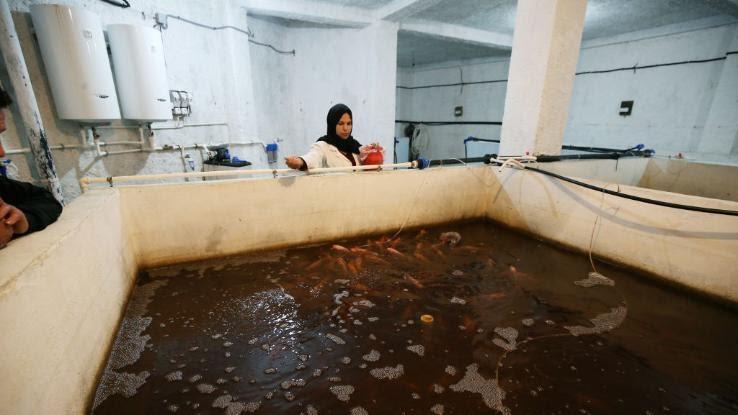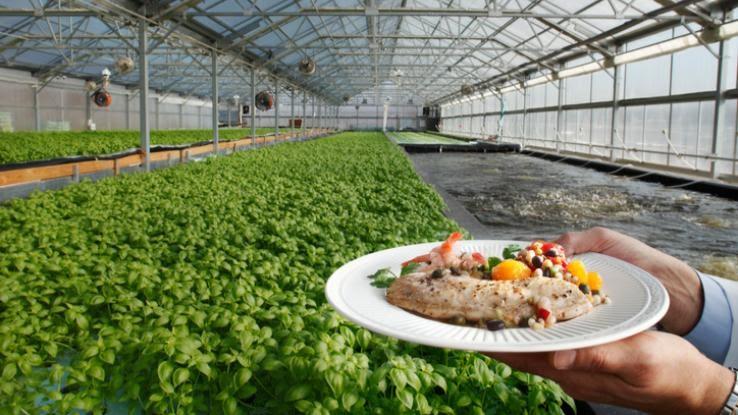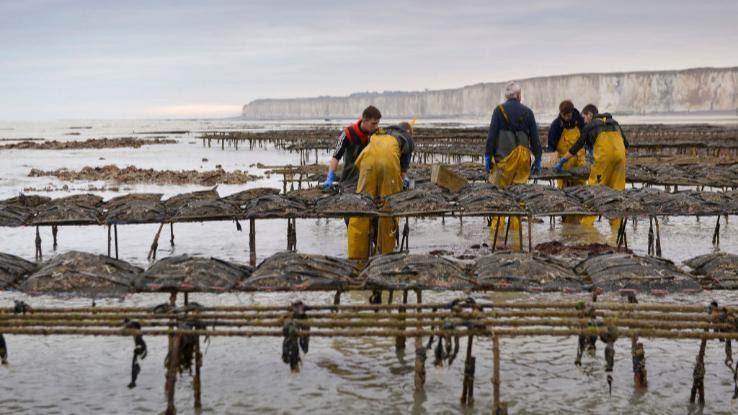What Are the Advantages and Disadvantages of Fish Farming?

Some of the advantages of fish farming (also known as aquaculture) include regulating supply and demand in the seafood industry, keeping the price of fish reasonable and partially mitigating overfishing in the wild. Some of the disadvantages of fish farming, however, include the possibility of water pollution, the possibility of releasing infected fish into the wild and the question of whether farm-raised fish are as healthy as wild-caught fish. Join us as we take a closer look into the world of fish farming to learn more about what it is and better understand its various pros and cons.
Farm-Raised Fish
Before examining the pros and cons of fish farming, it helps to define what this activity actually is. Put simply, fish farming is the commercial production of fish in a controlled environment. The idea behind fish farming is to raise fish that can then be sold as food rather than counting on fishers to supply the entire world’s population with wild-caught seafood.

According to the Food and Agriculture Organization of the United Nations, China is currently the world’s largest producer of farm-raised fish. A recent study found that fish farming has been enjoying healthy growth rates in South America, Africa, Norway, Chile and Egypt. The United States is presently considering joining the party, as Hubbs-SeaWorld Research Institute and Pacific6 Enterprise have proposed building a large-scale open-water fish farm off the coast of San Diego.
Types of Fish Farming
Not all types of aquaculture are created equally. There are several different methods that fish farmers utilize to raise fish for commercial sales. Some of these include:

- Pond Systems: One of the oldest types of fish farming, pond systems involve raising fish in a natural or manmade pond, ditch or canal.
- Open Net Pens: Open net pens look kind of like small cages that float on the surface of a large body of water. They’re usually made of metal, wood or bamboo, and they support a mesh enclosure that floats beneath the surface of the water. The fish are raised in these enclosures.
- Submersible Net Pens: Submersible net pens are similar to open net pens except that they exist completely underwater. They consist of underwater mesh pens where the fish are raised.
- Recirculating Systems: Among the most environmentally friendly systems of aquaculture, recirculating systems allow fish farmers to raise fish in a system of large indoor pools. A piping system pumps clean water into the tanks and filters wastewater out, making the tanks mostly self-cleaning.
Advantages of Fish Farming
There are a lot of seafood lovers in the world — and there aren’t always enough fish or fishers to keep up with demand. One of the primary advantages of fish farming is that it gives companies the ability to produce fish nearly anywhere and even control the production of specific breeds, which ultimately helps meet consumer demand.

This has other advantages. It helps cut down on both the price of fish and on overfishing, which could otherwise pose a threat to wild fish and end up disrupting vital ecosystems. Given that fish is a great high-protein dietary choice, aquaculture allows more people around the world to work seafood into their diets. Many types of aquaculture also tend to be slightly more environmentally friendly than the raising of other types of livestock.
Disadvantages of Fish Farming
For all its perks, fish farming isn’t without its downsides. Some types of aquaculture exist in open waters, right alongside wild populations of fish. The large number of fish produced in these concentrated underwater areas tends to produce a large amount of waste that can end up polluting the surrounding water and harming wild native fish populations.

Some fish farms can also become breeding grounds for bacteria and disease. There’s a risk of sick or infected fish escaping the nets and infecting wild fish. Additionally, some critics point out that the fish raised in fish farms are often fed fish meal, which is made from the meat of smaller fish that are often caught in the wild. Thus, even though the fish are raised on farms, they still require a large number of wild-caught fish to survive.
Fish Farming Effects on the Environment
The effect that fish farms have on the environment often depends on the particular farm in question and on the methods it uses. Open net and submersible net fish farms are arguably the least environmentally friendly types of aquaculture, as there’s little in the way of equipment to separate the water inside the net from the surrounding water outside.

This can result in things like antibiotics, hormones and other chemicals used in fish farming being released into the surrounding water. Not only can this pose a risk to wild marine life, but it may also harm people who share the same water supply. Aquaculture methods such as recirculating systems tend to be much more sustainable because their fish are raised in a fully controlled closed circuit and a constantly purified environment.
Fish Farming Business
Due to the surging popularity of fish farming over the past few decades, more fish are now produced through aquaculture than are caught in the wild. According to the Food and Agriculture Organization of the United Nations, the countries that produce the most farm-raised fish include:

- China
- Indonesia
- Peru
- India
- Russia
- United States of America
- Vietnam
There are currently hundreds of different kinds of fish bred on fish farms around the world, which creates employment opportunities for a large number of people. Depending on the kinds of fish a farmer wants to raise, start-up prices can be very low. There are also very few indications suggesting demand is likely to slow soon.
Farm-Raised Fish vs. Wild Caught
The debate continues over whether farm-raised fish are as healthy as those caught in the wild. Again, this largely depends on the practices of the farm where the fish were raised. Fish raised on farms that rely on cheap fish meal or bait for feeding may not have as much protein as their wild-caught counterparts.

A study from the Office of Disease Prevention and Health Promotion found some interesting results in regard to fish species consumed in the United States. The study revealed the following: “For commonly consumed fish species in the United States, such as bass, cod, trout, and salmon, farmed-raised fish have as much or more of the omega-3 fatty acids EPA and DHA as the same species captured in the wild. In contrast, farmed low-trophic species, such as catfish and crawfish, have less than half the EPA and DHA per serving than wild caught, and these species have lower EPA and DHA regardless of source than does salmon. Farm-raised fish have higher total fat than wild caught. Recommended amounts of EPA and DHA can be obtained by consuming a variety of farm-raised fish, especially high-trophic species, such as salmon and trout.”
Fish Farming Pros and Cons Chart
As you can see, aquaculture comes with a list of pros and cons, often depending on the type of fish farm in question. Because there are now a variety of different techniques used in fish farming, it can be difficult to make sweeping evaluations of the entire industry. To sum up the pros and cons of fish farming, review the following lists.

Pros of Fish Farming
- It regulates supply and demand and decreases the risk of overfishing.
- It keeps seafood prices reasonable.
- It can also be an in-land business.
- Farming allows for predictable purchase orders for seafood suppliers to better meet demand.
- Certain types of aquaculture can be more sustainable than other forms of livestock production.
- There may be less strain on native fish populations.
Cons of Fish Farming
- Open-water fish farming may pollute the surrounding water.
- Some fish farms may produce sick or infected fish that escape and present a risk to wild sealife.
- Farm-raised fish aren’t guaranteed to be as nutritious as wild-caught fish.
- Some fish farms rely on wild-caught fish to produce fish meal.
- Farms may contaminate local water supplies.





